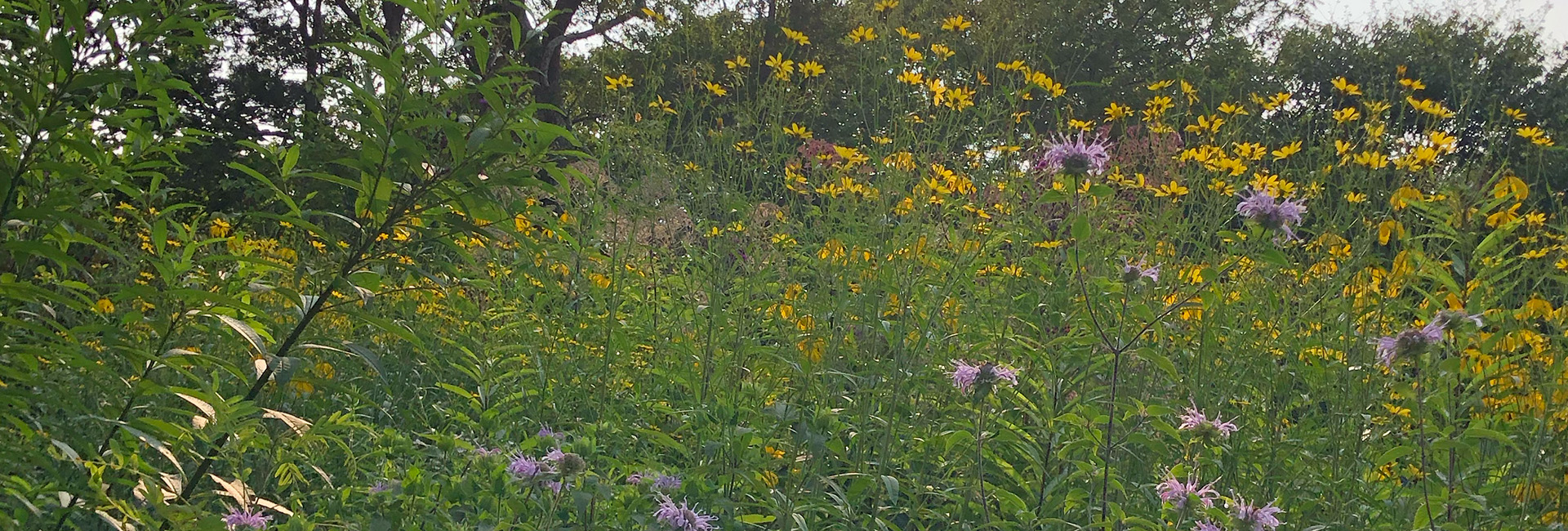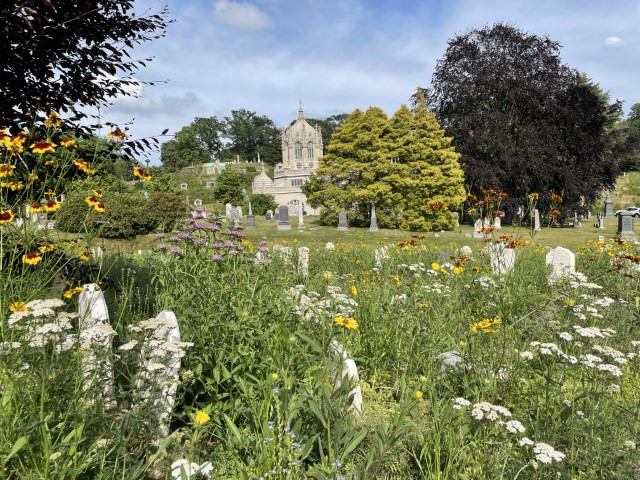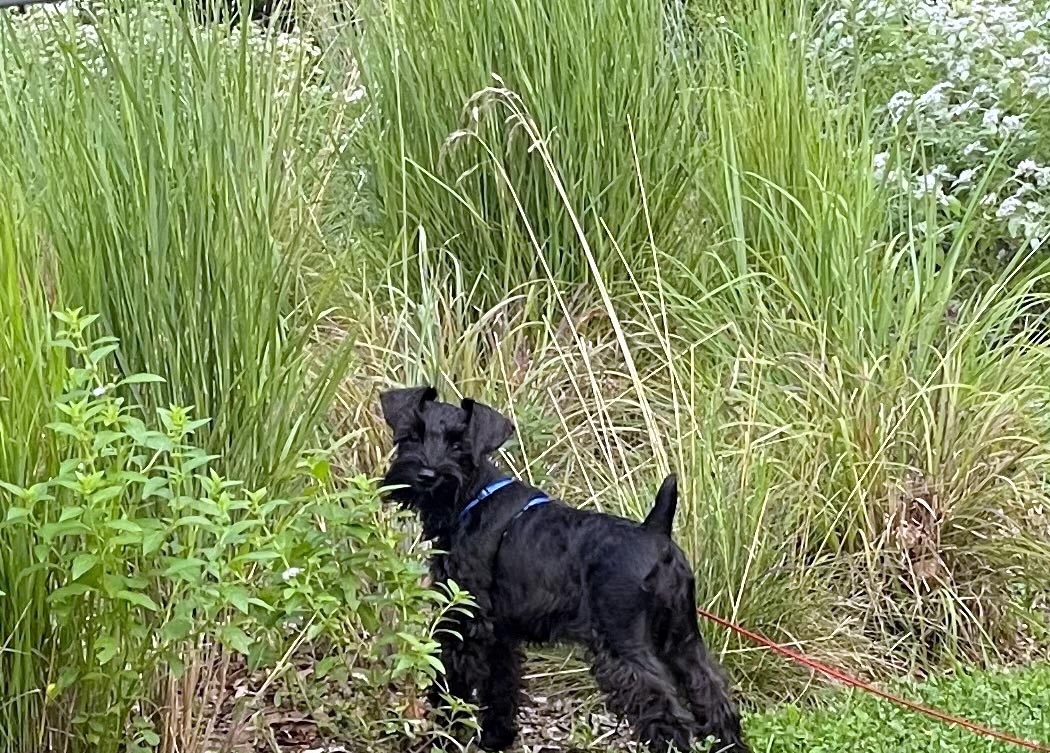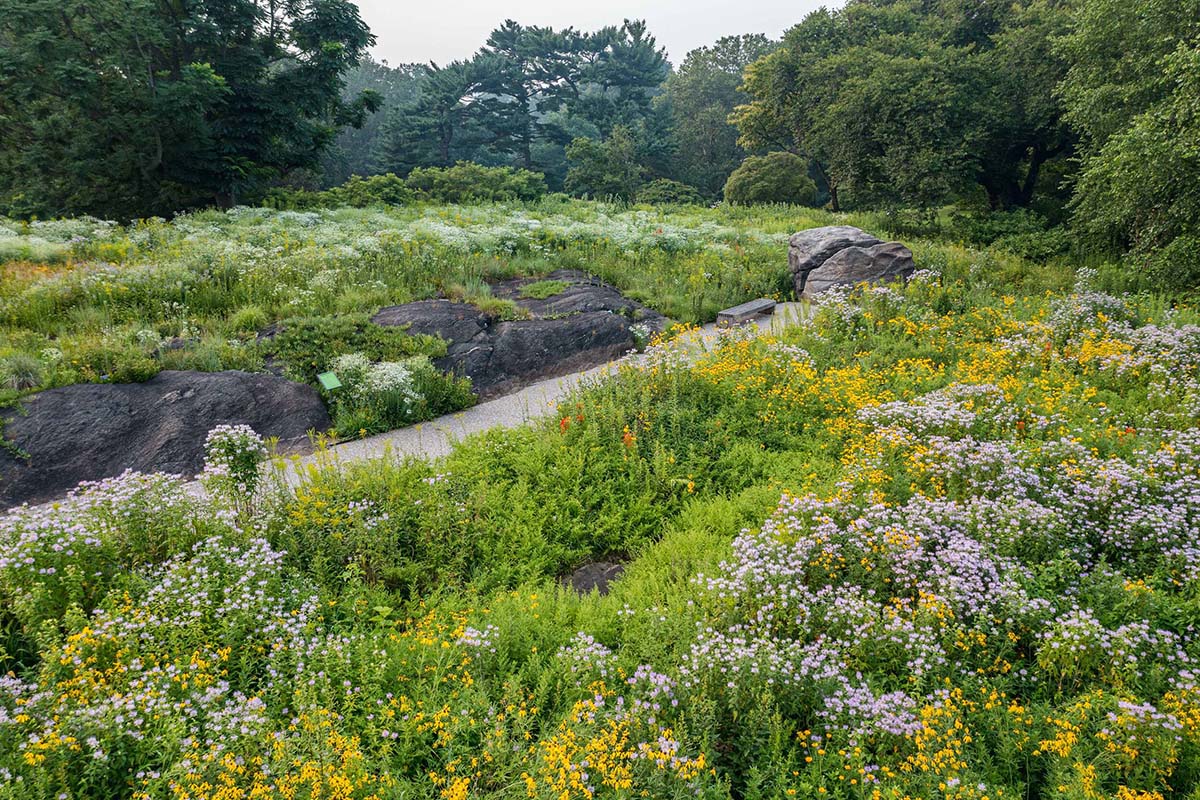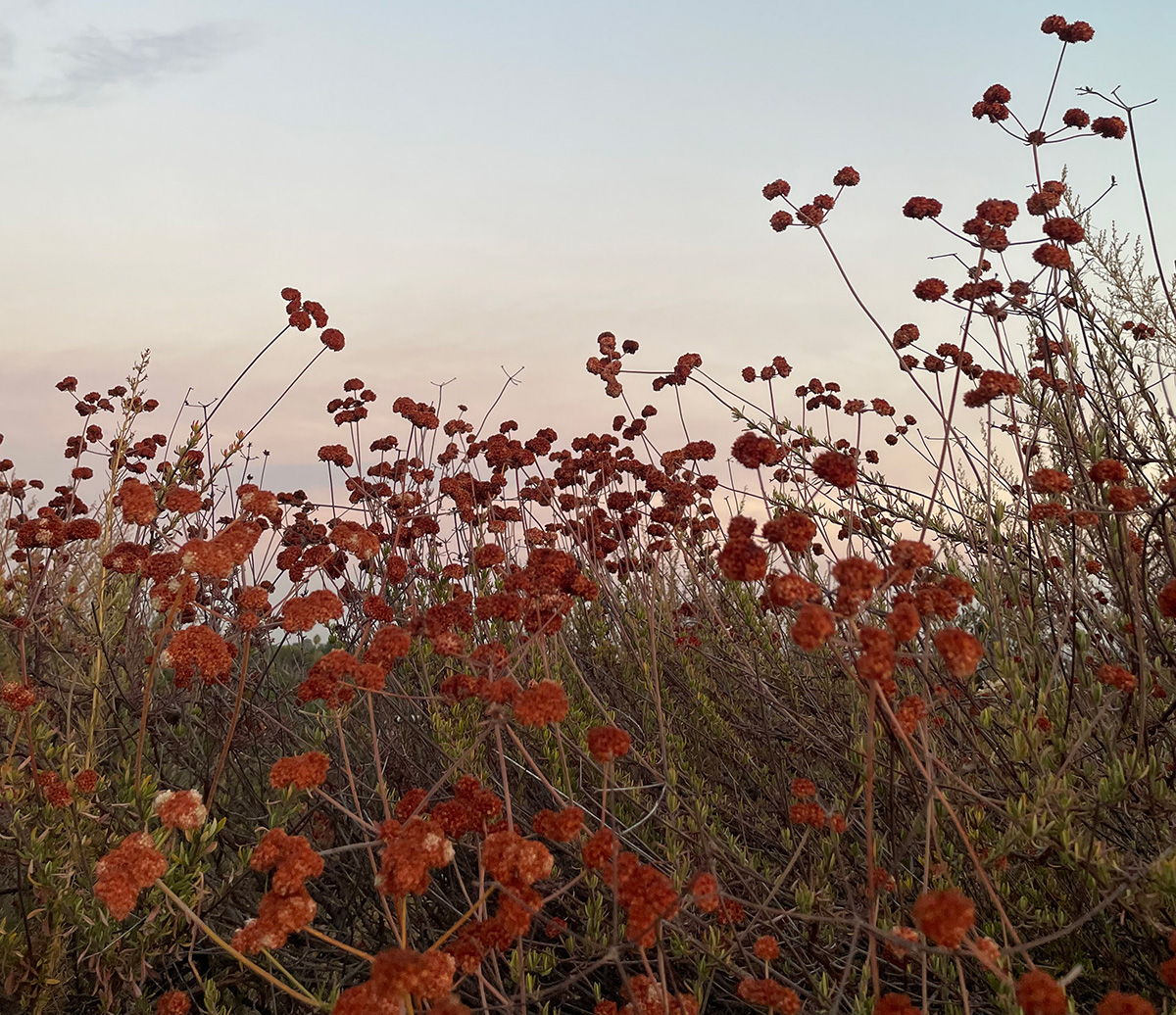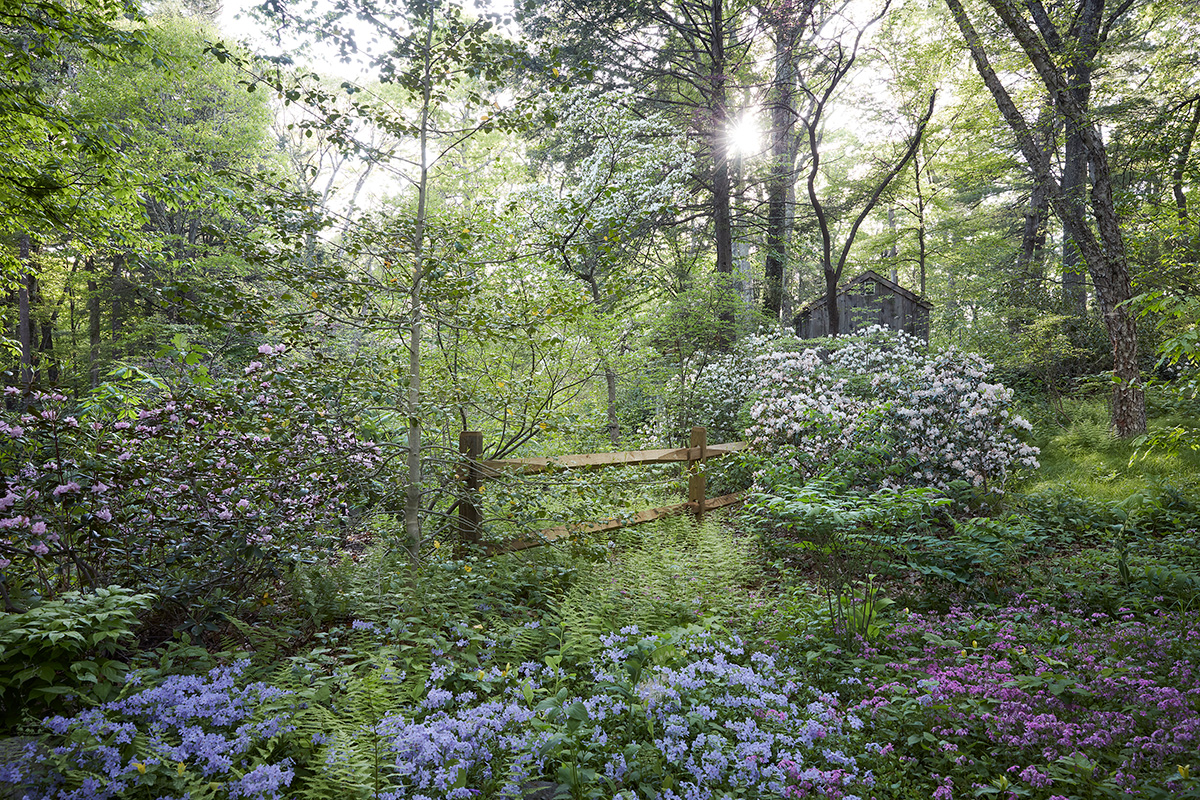
By Melissa Ozawa
Photos courtesy of Native Plant Trust
We all know our choices matter. What we buy, where we shop, whom we vote for—and how we garden. But how do we know what to choose? “We typically think of gardening as a neutral activity,” says Tim Johnson, the CEO of Native Plant Trust. “But over the years, I’ve come to realize that gardening can be a radical activity. It anchors our attention and connects us to a place, making us keenly aware of where we are.” As more gardeners are interested in following sustainable practices, it’s helpful to understand why these practices are important and how they impact our greater community. Perfect Earth Project talked with Johnson about what ethical horticulture means, what you can do to “put the landscape back together,” and how to embrace your inner garden radical.
How can you be an ethical gardener?
We can approach gardening at two ends of a spectrum. We can treat it like an engineering activity where we’re sort of installing a thing, and then trying to hold the thing static. Or we can see it as an extension of our community and self. If we think about what’s important to us, there are opportunities within the garden to live our personal ethics.
I am hopeful that gardeners as a collective are working towards what’s intrinsically better for the environment—moving away from synthetic fertilizers towards soil management or skipping high maintenance cultivars for lower maintenance native plants, for example. The choices I make in the garden are an extension of the choices I make as a consumer, as an omnivore, as a citizen.
In the summer, Ironweed (Vernonia noveboracensis) attracts butterflies, like this skipper. In the fall, birds will feast on its seeds. “We see huge improvements in the ability of gardens to support wildlife and pollinators in a landscape that is at least 70% composed of natives. That number allows me to have, say, Itoh peonies, while I add nitrogen fixing native honey locusts or red buds in my yard,” says Johnson. “ I can have the benefit of all these native plant species, which are supporting our native fauna and the region’s ecological processes, and also get all the showiness that I want from a landscape.” Photo by Uli Lorimer, courtesy of Native Plant Trust
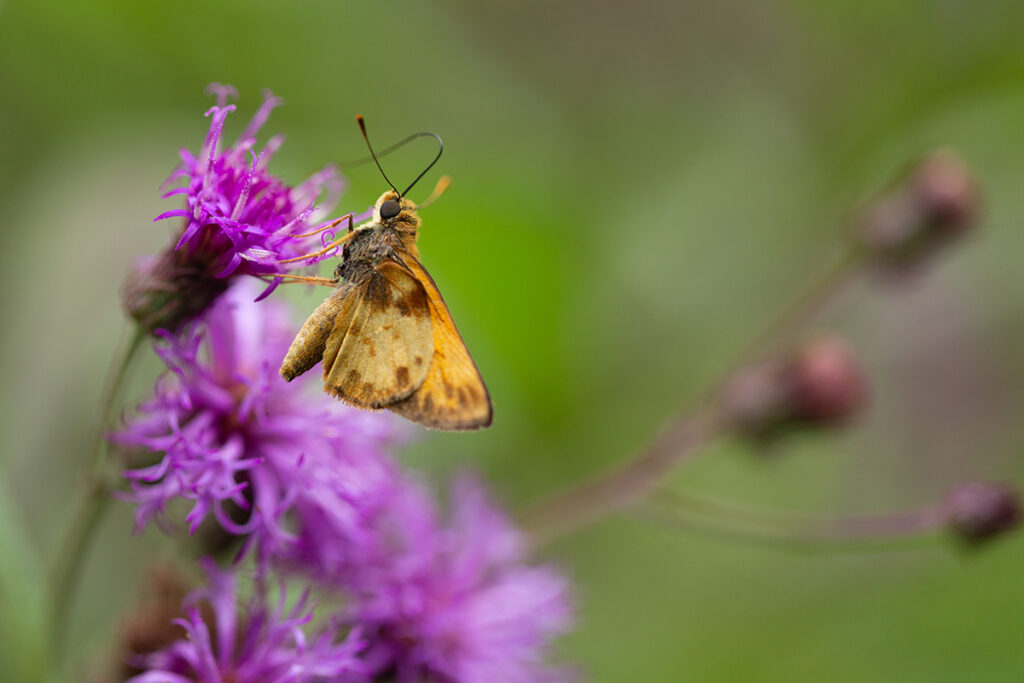
How should you go about choosing plants?
When it comes to plant selection, I first ask myself, what am I looking for a plant to do in the landscape? And generally, this means how attractive is it, what is its shape, and what is its form? But I’m also thinking about the ecological function that a specific plant brings.
For example, I have minimal shade, really sandy soil at my home, and really terrible grass. Part of the reason I have really terrible grass is because I refuse to do the traditional thing of keeping it a monoculture by fertilizing and applying herbicides to it and watering it constantly. And so that means that crabgrass moves in and things get challenging. Instead of moving backwards towards chemical-based turf science in the landscape, I am asking, what does my landscape need to thrive?
I’m thinking about three things. For one, adding strategic shade throughout my landscape because more shade means less watering. Two, what are the plants that are going to survive in my sandy soil? Instead of trying to fertilize, I can find plants that work well in a low resource environment, like prairie dropseed. And lastly I’m thinking about lawn removal. I’ve been planting micro clover, which is a nitrogen fixer, and is also more drought tolerant than turf grass. Plus, it looks fantastic.
The ethics behind this is I want to reduce resources, mainly the amount of water that’s going into my landscape. I also don’t want to use chemical fertilizers. I want to stick with primarily compost-based ones. In the long run, I’m thinking about the places where I need fertility, how to use plants to develop that fertility over time, and plan for a succession in the garden.
Why is it important to seek out species native to your ecoregion?
I love the concept of “right plant, right place.” At Native Plant Trust, we believe that part of right plant, right place is understanding the landscape context. What are the species native to your specific region? And in that way, right plant, right place also becomes an extension of those wild genetics. We can think about the little bluestem, or the various asters, or goldenrods, that are growing in our garden as an extension of those plants growing in a field adjacent to our property. There’s an opportunity to invite those genetic processes, that are invisible to us but so important, directly into our own yards and gardens.
I love thinking there’s a little native bee that’s visiting the plants in my yard, but then it’s going to fly 200 or 300 feet into the grassland around my house. Those genetics are going to be shared through pollination. We need to make sure that throughout the region we are growing species that are relevant to where we live, but also that we’re actually growing the genetics from that specific area.
Native Plant Trust is working on trying to increase the regional availability of ecoregional seed. [Editor’s note: Learn more about Native Plant Trusts’ work with the Northeast Seed Network.] There are a couple of companies and organizations that are really focusing on offering seeds of native species with known provenance to different ecoregions. But the reality is we need more of them. We need lots of seed producers, nursery growers, and seed companies supplying the material throughout the region. Not to mention we need landscape architects, garden designers, and gardeners to introduce a new aesthetic and ethic to the landscapes they design and manage. Start asking for this. Nurseries, designers, and gardeners will respond to consumer interest and demand.
How should I let my garden evolve?
As I mentioned, my own garden is very flat and open with minimal shade and lots of sandy soil. My goals are to bring in some shade, put in nitrogen fixers that will start to alter the soil environment, and then think about the future of these sites. Right now, it’s hard to grow much in these very dry, hot, sandy areas. As I introduce a little bit of dappled shade, I need to start thinking about what the next phase of plants are that might move in, and actually embrace that part of the journey. I think as a gardener, one of the things we have is the opportunity to be really brave, and to know that the landscape will change all the time.
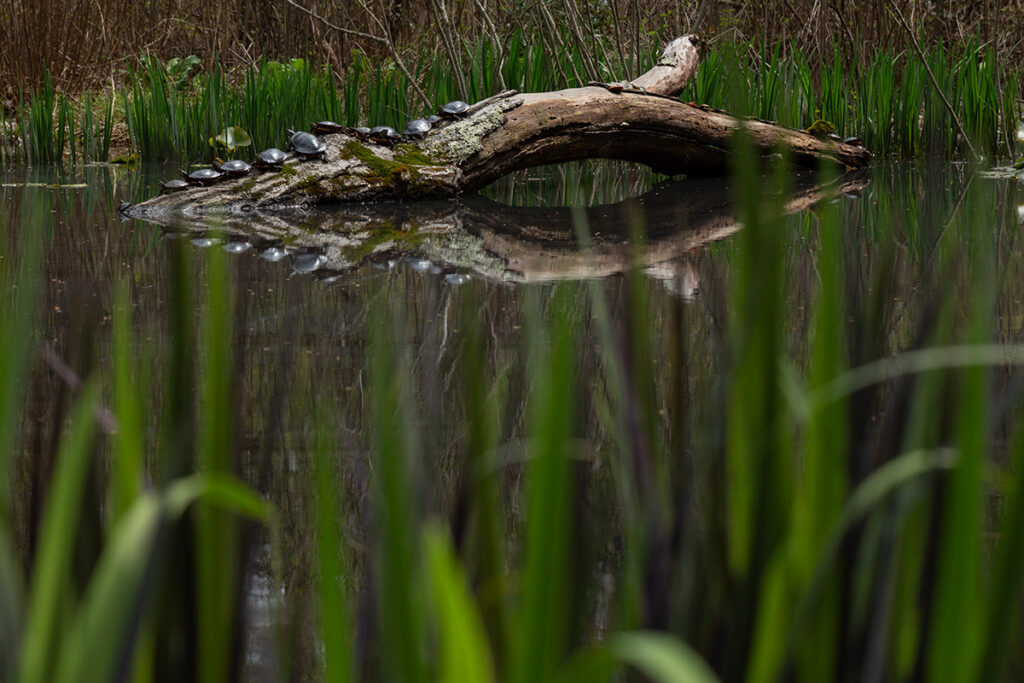
It’s turtles all the way down—or at least all the way down this log in a lily pond. These native painted turtles, surrounded by native iris foliage, need clean, freshwater habitat to survive. To protect turtles and other wildlife, avoid all pesticides and chemical fertilizers, which pollute waterways and are harmful to the ecosystem. Photo by Uli Lorimer, courtesy of Native Plant Trust
What’s the biggest threat to habitat and how can we help?
The number one threat to habitat right now is humans. We are directly impacting land because of where we build, our agricultural activities, and how we are affecting climate change throughout the world by our use of fossil fuels. If we only look to the most pristine landscapes as opportunities for preserving biodiversity, we’re really missing out on a great deal of the world.
We need to create habitat in our yards. For example, we may use a matrix of plants that are from our local environment. We may organize them a little bit differently so that they’re legible as a garden, but they will still provide habitat value. In conservation, we know that a huge challenge is habitat fragmentation. We can actually, even in our urban environments, put the landscape back together by building these little oases for wildlife.
What do you say to people who say, “How is my tiny plot going to make a difference”?
Rather than thinking about how big or how small of an impact a person can have, I encourage people to have the impact that they can have. The more you look, the more you find. It may be that one Ilex on your stoop that really makes you remember that you are part of nature. The bees that are visiting this plant are also visiting plants in your neighborhood and surrounding natural areas.
Instead of thinking of your patch of land as separate, start to think about it in a larger context. The things I put into my landscape affects my neighbors’ landscape. If you think about it that way, it might alter your comfort level with certain pesticides or herbicides. We might become even more sensitive to thinking about invasive species and really wanting to make sure that we’re not contributing to problems.
One of the things that I hope for my landscape, and I think is central to ecological horticulture, is to leave it in better condition than when I arrived.”
“Fall is a great time to put things in the ground because you won’t need to water all summer long,” says Johnson. “Just make sure you plant before it goes dormant to give it a chance to take root.” Here, Pennsylvania sedge (Carex pensylvanica), a species Native Plant Trust’s scientists figured out how to reliably germinate from seed, thrives in partial shade and spreads by rhizomes. Photo by Dan Jaffe Wilder, courtesy of Native Plant Trust
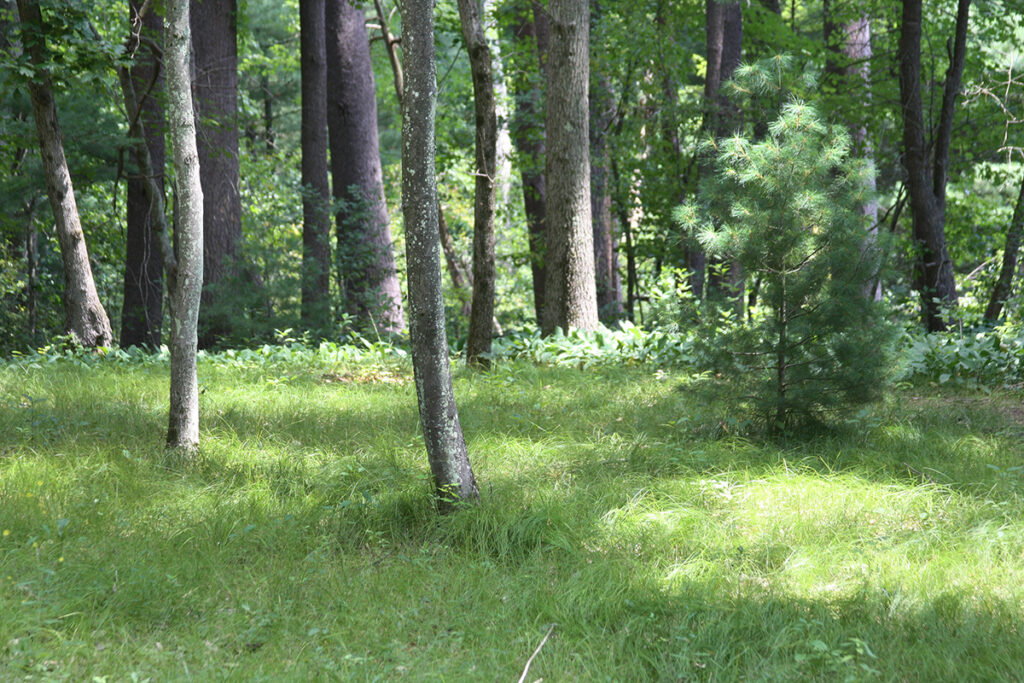
Is there anything specific we should be thinking about focusing on ecologically in our gardens, like pollinators?
Pollinators, like bees, and butterflies, get a lot of attention . . . but I would love people to think about helping all insects. Understand there is a whole web out there. Don’t discount predatory insects, like parasitic wasps. They are helping control bugs like squash beetles in the vegetable garden. Or if you want birds in your yard, you’ll need all kinds of insects. Most migratory birds need them to survive. You need to be aware of how native plants actually support that wildlife to a much greater extent.
Oaks, for example, support over 500 species of caterpillars which birds depend on. We can compare that to the nonnative Zelkova, which is a great urban tree that is sort of resistant to every sort of environmental stress, but doesn’t support any native caterpillars. Throughout the course of a year that Zelkova isn’t really supporting fledglings of baby birds. It isn’t supporting the nutrition that birds need to move on to their next migration spot. Whereas oaks support the hundreds of species of insects that those birds can feed on.
Is there one thing you believe all gardeners should do or not do?
At Native Plant Trust, we have two don’ts: Don’t use pesticides and don’t plant invasives. Other than that I trust that people will find their way to native plants and to a more ecologically friendly approach to nature. I believe that once you start seeing bees on your bee balm or see your soil getting richer because you’re letting organic matter decompose and enrich the soil, you can’t help but want to support nature as much as possible.
What is the responsibility of the gardener today?
Be a good human. We have three overlapping crises. We have a biodiversity loss crisis. We have a climate change crisis. And we have a social justice crisis. The potentially most dangerous thing is losing hope that there’s actually something we can do about them. One of our board members says that when she’s particularly frustrated with the climate crisis, she plants another native plant. I really think about that. I don’t mean to oversimplify things by saying that fixing our problems can be as simple as planting one plant. But I think we need to protect our own mental strength and capacity. The garden helps me feel like there’s hope.
If we want to be good humans, we need to have a degree of awareness of how our local actions have global consequences. When we pay attention to the connectedness that already exists in nature, it starts to shift the way we see the world. Gardening shifts my ethics. When you’re keenly aware of ecology while gardening, it gets harder and harder to see where the self ends and the other begins.
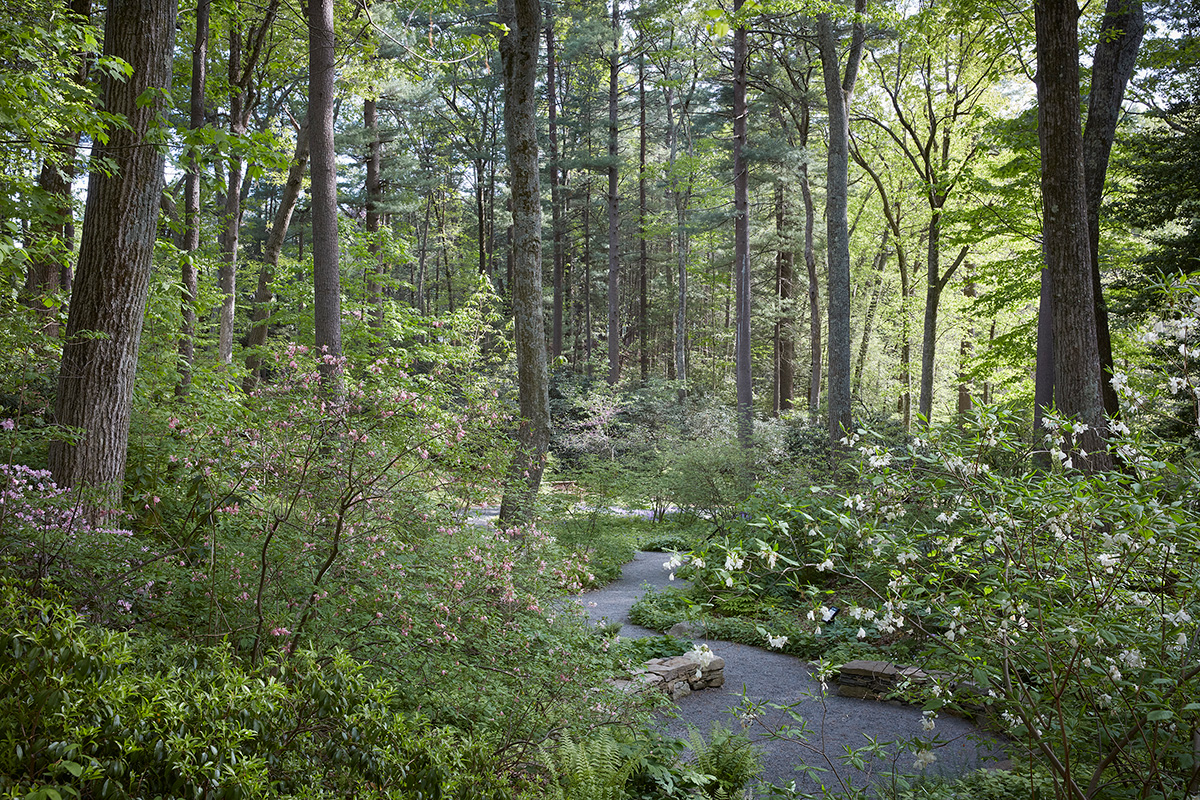
The interview has been edited and condensed for clarity.
This is part of a series with Gardenista, which ran on September 26, 2024.
